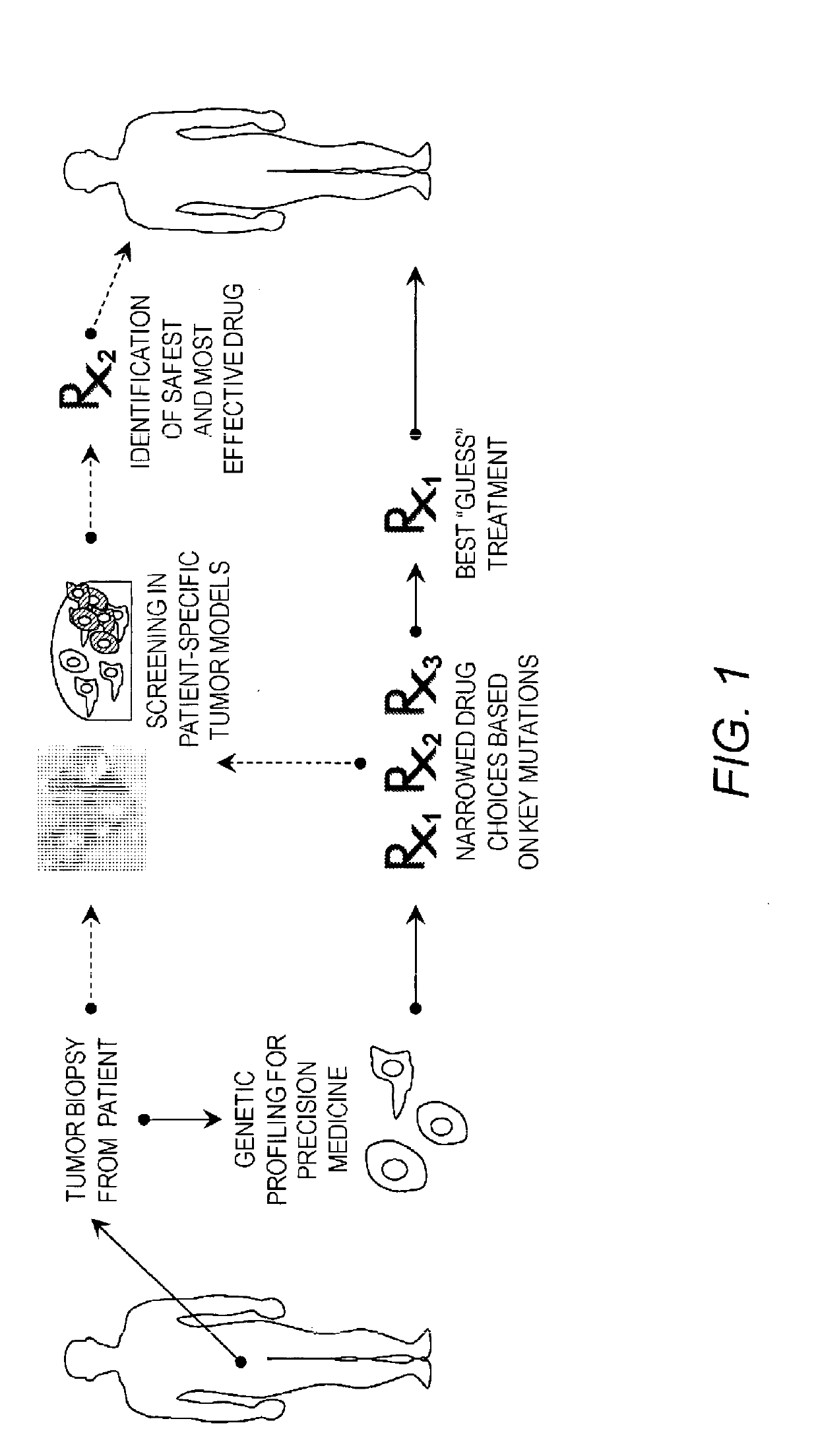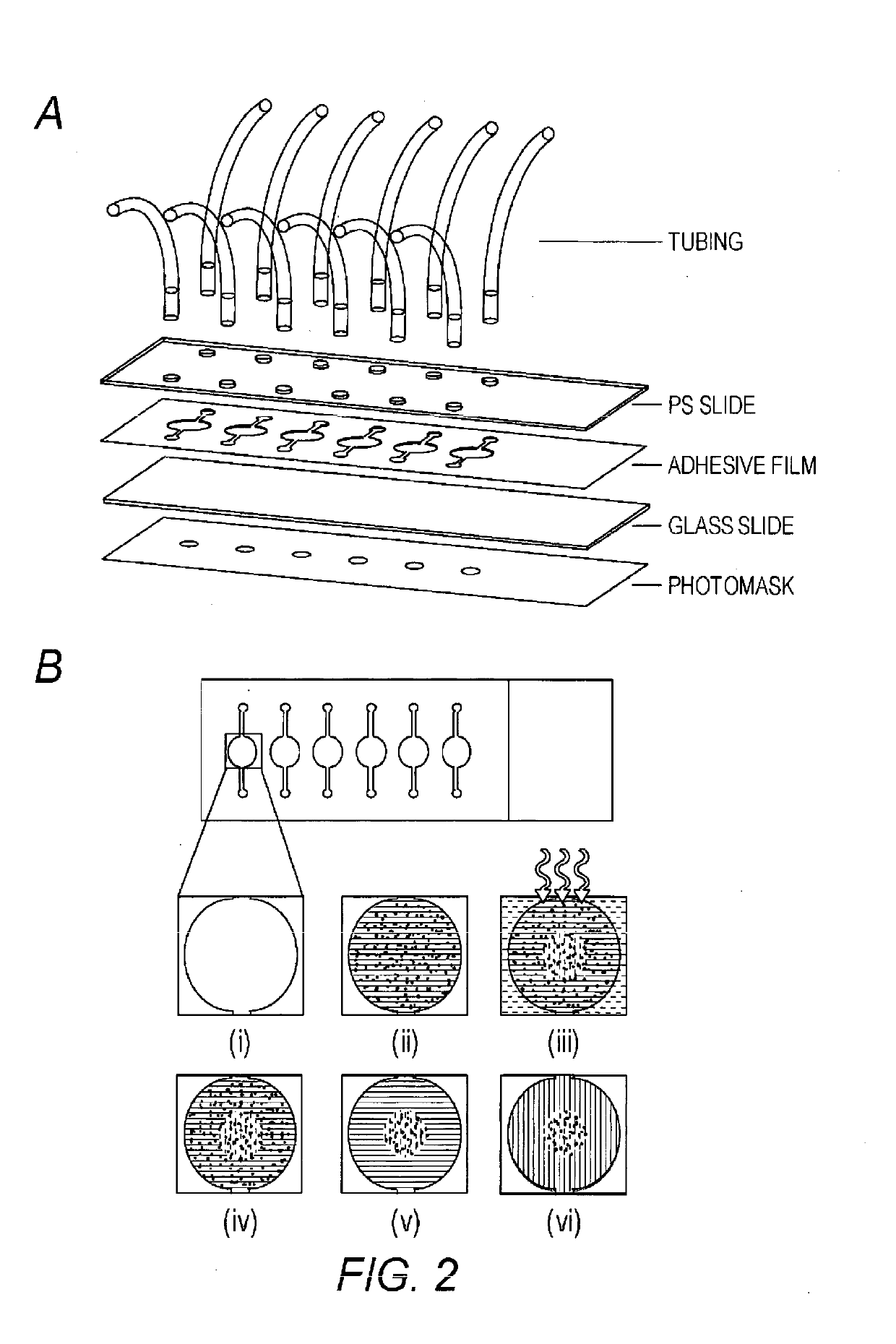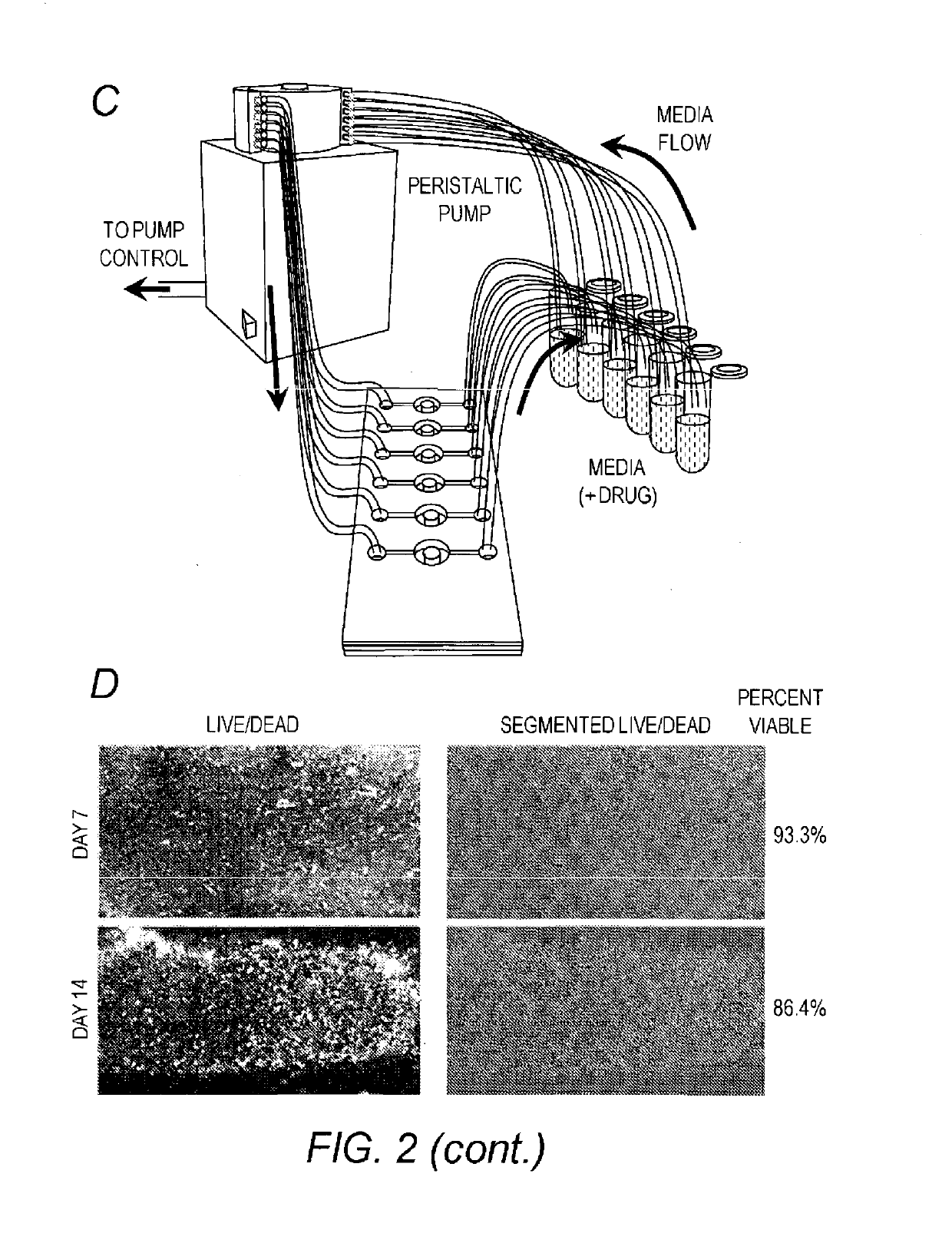Cancer modeling platforms and methods of using the same
a technology of cancer modeling and platform, applied in the field of in vitro cell constructs, can solve the problem of difficult choice of absolute best drug for a particular patien
- Summary
- Abstract
- Description
- Claims
- Application Information
AI Technical Summary
Benefits of technology
Problems solved by technology
Method used
Image
Examples
example 1
[0081]The first objective of this project was to evaluate a 3D model of a colorectal cancer tumor surrounded by normal host tissue. The engineered concentric ring construct consists of a colorectal tumor core and a colon epithelial outer ring, to model a tumor in a reductionist, yet physiologically relevant environment. This construct was used to measure the growth of the tumor core, any observed invasion of the tumor cells into the epithelial layer, and the efficacy of drugs. The constructs were created with cells suspended in a hyaluronic acid and gelatin-based hydrogel. The tumor cores were made using one of four colorectal cancer cells types, thereby providing models of 4 levels of malignancy. The HCT116 cells were the most malignant, followed by the HT29, SW480, and Caco2 cells. Caco2 cells were also employed in the outer ring, as they best resemble healthy epithelial cells. The tumor core was fluorescently labeled and fluorescent imaging was used to monitor the tumor core over...
example 2
[0084]3D tumor organoids were microengineered directly from fresh tumor biopsies to provide a patient-specific model system with which treatment optimization can be performed before initiation of therapy. Here, the initial implementation of this platform is demonstrated using a mesothelioma tumor biospecimen removed from a patient. Shown is the ability to biofabricate and maintain viable 3D tumor constructs within a tumor-on-a-chip microfluidic device. Second, it is demonstrated that on-chip chemotherapy screening mimics patient response to the drugs cisplatin and pemetrexed. Finally, it is demonstrated in vitro the effectiveness of a candidate compound identified through genetic biomarker assessment.
Methods
Thin Film Microfluidic Device Fabrication
[0085]The microfluidic device fabrication approach is based on methods reported elsewhere. Channels were formed in double-sided adhesive film using a cutting plotter (GraphTec-CE6000-40) and the bottom surface of the patterned layer was ad...
example 3
[0110]Multiple sets of patient tumor-derived organoids have been generated with over a 90% take rate in vitro (versus below 10% in 2D cell cultures), which is favorably compared to a reported 25-33% take rate in patient-derived xenograft (PDX) models where only the most aggressive biospecimens prosper. This poor take rate limits the application of PDX technology to predictive diagnostics for most cancer patients. Our tumor organoid systems have subsequently been employed in a drug screens to demonstrate that like patients, their tumor organoids maintain selective response to different drugs. To date sets of patient-specific organoids have been created from a diverse group of primaries and their metastatic sites including colorectal cancer, high and low grade appendiceal metastatic sites to omentum ovary and liver, peritoneal mesothelioma, and extremity sarcoma. Described herein are several examples, demonstrating 1) correlation between tumor organoid drug response and the drug respo...
PUM
 Login to View More
Login to View More Abstract
Description
Claims
Application Information
 Login to View More
Login to View More - R&D
- Intellectual Property
- Life Sciences
- Materials
- Tech Scout
- Unparalleled Data Quality
- Higher Quality Content
- 60% Fewer Hallucinations
Browse by: Latest US Patents, China's latest patents, Technical Efficacy Thesaurus, Application Domain, Technology Topic, Popular Technical Reports.
© 2025 PatSnap. All rights reserved.Legal|Privacy policy|Modern Slavery Act Transparency Statement|Sitemap|About US| Contact US: help@patsnap.com



